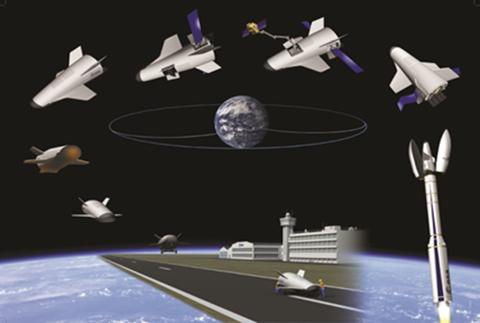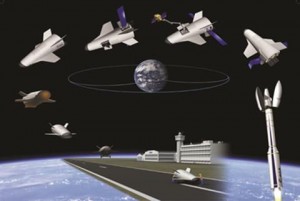
The US Air Force’s third classified X-37B Orbital Test Vehicle mission has been delayed for a second time, and is now scheduled to launch on November 27, a month after its original launch date. The delay is due to an ongoing investigation into an engine glitch that occurred on an October 4 flight of a closely related vehicle to the Atlas 5 used to launch X-37B.
On October 4, the launch of a GPS satellite aboard a United Launch Alliance (ULA) Delta 4 rocket experienced low thrust in its upper stage, requiring compensation using reserve fuel to put the satellite in its proper orbit. ULA, who also operates the Atlas 5, has been investigating the incident along with the US Air Force. The continued delay of the Atlas 5 launch is seen by many as being a bit overly cautious. There is no word yet as to the cause of the low engine chamber pressure in the Delta 4 RL-10B-2 upper stage engine or whether any crossover effects can be expected to the different model of the Pratt &Whitney Rocketdyne RL-10 engine used by Atlas 5.
Meanwhile, the success of the X-37B is not going unnoticed. When the European Space Agency ministers meet on November 20-21, they will be deciding whether to pursue a civilian European version of the space plane. Called the Innovative Space Vehicle (ISV), ESA’s version would operate much like the X-37B, even sporting a similar, Shuttle-esque look. ESA is already working on a reusable demonstrator, the Intermediate Experimental Vehicle (IXV). “We started from our current IXV but went from suborbital to orbital and modular payloads and a multipurpose cargo bay for different orbital applications,” Giorgio Tumino, the IXV program manager, said. “The idea is to have a small system, which is affordable to be refurbished and can use the smallest launcher, to have a cost-effective scenario.” IXV is currently limited to suborbital flight due to its 1800 kg mass, which exceeds the orbital capacity of its Vega launch vehicle. X-37B masses 5,000 kg but launches on a more powerful rocket. Like X-37B, IXV and ISV would both land on a runway.
This will be the third orbital test of the Boeing-built X-37B, and the first reflight of any of the prototypes. The last X-37B mission lasted 468 days, well beyond its designed flight duration of 270 days. The Air Force is not releasing the expected duration of this flight.
Watch the landing of the second X-37B flight below:


















































































































![A trajectory analysis that used a computational fluid dynamics approach to determine the likely position and velocity histories of the foam (Credits: NASA Ref [1] p61).](http://www.spacesafetymagazine.com/wp-content/uploads/2014/05/fluid-dynamics-trajectory-analysis-50x50.jpg)



Leave a Reply